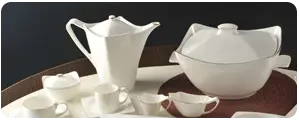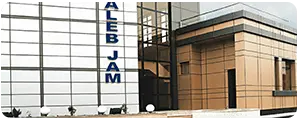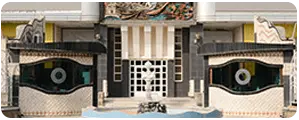Opal Glass Tableware: Combining Practicality and Elegance
Opal glass tableware, with its distinctive milky-white appearance, is a popular choice for both casual and formal dining settings. Combining practicality and elegance, this unique material offers numerous advantages over traditional tableware options such as porcelain, ceramic, and stoneware. In this article, we will explore the history of opal glass, its manufacturing process, and the reasons behind its growing popularity.
The History of Opal Glass
Opal glass, also known as milk glass or white glass, dates back to ancient civilizations, including the Egyptians and Romans. However, it gained significant popularity during the 19th and 20th centuries, particularly in the United States and Europe, where it was widely used for tableware and decorative items. Today, opal glass is experiencing a resurgence in popularity as consumers increasingly appreciate its aesthetic appeal and practical benefits.
Manufacturing Process
The production of opal glass involves a combination of silica, soda, lime, and other materials, including fluorides and phosphates. These ingredients are melted at high temperatures, and then a special opacifying agent—typically bone ash, cryolite, or tin oxide—is added to give the glass its characteristic opaque, milky-white appearance. This opacifying agent scatters light, preventing it from passing through the glass and creating the desired aesthetic.
Once the molten glass mixture is ready, it can be shaped using various techniques, such as pressing, blowing, or casting. The final product is then annealed to relieve internal stresses and ensure durability.
Benefits of Opal Glass Tableware
Opal glass tableware offers several advantages over other types of tableware, making it a popular choice for both casual and formal dining settings:
Durability
Opal glass is known for its strength and resistance to chipping, cracking, and breaking. This durability makes it a practical choice for everyday use, as well as for occasions when you want to impress your guests with elegant tableware that can withstand the rigors of a lively dinner party.
Non-Porous Surface
Unlike porous materials such as ceramics, opal glass has a non-porous surface, which means it won't absorb stains, odors, or flavors from food and beverages. This makes it easier to clean and maintain, as well as more hygienic.
Microwave and Dishwasher Safe
Most opal glass tableware is microwave and dishwasher safe, making it a convenient choice for modern households. It can withstand the high temperatures of both appliances without losing its luster or becoming damaged.
Elegant Aesthetic
The milky-white appearance of opal glass lends a touch of sophistication and elegance to any dining table. With its unique translucent quality, it allows light to gently diffuse through the material, creating a soft glow that enhances the visual appeal of your table setting.
Versatility
Opal glass tableware is available in a wide range of designs and styles, from classic to contemporary, making it suitable for any décor. Its neutral color palette also means it can easily be mixed and matched with other tableware materials and colors.
In Conclusion
Opal glass tableware offers the perfect blend of practicality and elegance, making it a popular choice for modern households. Its durability, non-porous surface, and microwave and dishwasher compatibility ensure it can withstand the demands of everyday use, while its timeless, sophisticated aesthetic brings a touch of refinement to any dining occasion. With its growing popularity, opal glass tableware is poised to become a staple in kitchens and dining rooms around the world.
 Maghsoud Porcelain Manufacturing Complex was officially opened on March 1993 with the participation of National Bank (Bank Melli) of Iran investment Company and Union of Government Employees (SCAD) with annual nominal capacity (3,000 tons).
Maghsoud Porcelain Manufacturing Complex was officially opened on March 1993 with the participation of National Bank (Bank Melli) of Iran investment Company and Union of Government Employees (SCAD) with annual nominal capacity (3,000 tons).

 DORSA Company as the largest spoon and fork manufacturer in the country, using lean production methods, produces products in accordance with the quality of the Solingen brand Germany Company with a capacity of 3 million items per month in three shifts. This company can produce the product in four different ways of mirror polishing, sandblasting, gold rim (round), and matte using the finest stainless steel 304.
DORSA Company as the largest spoon and fork manufacturer in the country, using lean production methods, produces products in accordance with the quality of the Solingen brand Germany Company with a capacity of 3 million items per month in three shifts. This company can produce the product in four different ways of mirror polishing, sandblasting, gold rim (round), and matte using the finest stainless steel 304. Azin Ghaleb Jam Company in 2005 was the founder of the most specialized unit for manufacturing glass molds with high precision and efficiency in the country aimed at producing glass molds and using the most modern state-of-the-art CNC machines in the world, including DMG Germany, etc., as well as utilizing specialized and capable engineers in this field.
Azin Ghaleb Jam Company in 2005 was the founder of the most specialized unit for manufacturing glass molds with high precision and efficiency in the country aimed at producing glass molds and using the most modern state-of-the-art CNC machines in the world, including DMG Germany, etc., as well as utilizing specialized and capable engineers in this field. Gol Naghsh Toos Company, since 2006, has been working with a nominal annual capacity of producing and printing about 1500000 sheets of different types of decals for Porcelain, Opal Glass, and Pyrex, Tile, and Heater products..
Gol Naghsh Toos Company, since 2006, has been working with a nominal annual capacity of producing and printing about 1500000 sheets of different types of decals for Porcelain, Opal Glass, and Pyrex, Tile, and Heater products..




بدون دیدگاه